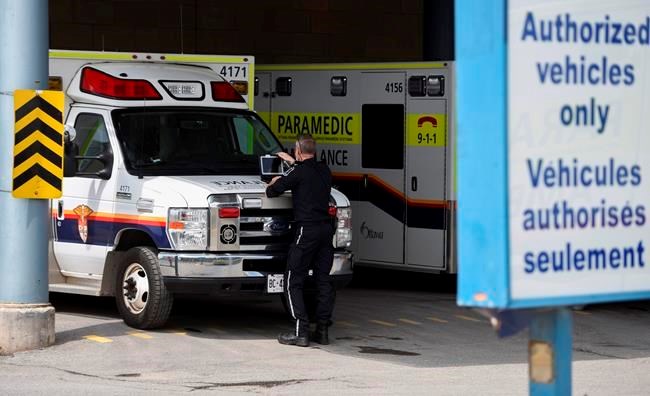Ottawa paramedics are seeking provincial approval for a new program that would see some patients with non-urgent concerns taken to hospital in a taxi, in a bid to ease the crushing demands on ambulance crews.
In the first nine months of this year, the Ottawa Paramedic Service saw 1,088 instances of level zero – when no ambulances are available – lasting for a total of 32,697 minutes, a report from the service says.
A significant contributor is offload delays, the time paramedics spend in ERs waiting to discharge a patient to the care of the hospital. From January to September of this year paramedics spent 72,784 hours in offload delays in Ottawa hospitals, their report says.
The Ottawa paramedics are now looking to start a pilot project Nov. 1 to send non-urgent patients to hospital or an alternate destination such as a family doctor's office, in order to free up more ambulances.
"It doesn't solve the problem, but it helps mitigate to a degree and helps us get to that next patient who may require service," Chief Pierre Poirier said in an interview.
The request for approval was submitted to the Ministry of Health a year ago, and the service is hoping to hear back soon, Poirier said.
A spokesperson for Health Minister Sylvia Jones said the proposal is under review and has not been approved at this time.
"The Ministry of Health’s priority in reviewing all unsolicited proposals to update patient care models is to ensure that the proposed changes maintain patient safety," Hannah Jensen wrote in a statement.
At first, the envisioned program would launch with 40 specifically trained paramedics, increasing to 140 by the end of the year, the service said.
Those paramedics would arrive on scene, do an assessment that may also include social determinants of health such as the state of a person's home or if they have caregiving support, Poirier said. The paramedic would then consult a doctor by phone if they feel a taxi is appropriate, such as for a patient with a twisted ankle or insomnia causing anxiety, he said.
Any patient transported by taxi, who would walk into the health-care facility themselves, would receive a follow-up call from paramedics within 24 hours.
Niagara Emergency Medical Services introduced a similar pilot last year and in an update five months into the project it said the taxi service was used 106 times.
"In addition to preserving EMS ambulance capacity, five of these trips diverted patients away from (emergency departments) to more appropriate healthcare facilities such as walk-in clinics," the service wrote in its update.
The most common concerns those patients called for included back pain, general anxiety and upper respiratory infection symptoms, the service said.
It would also save money, they said, with the average cost of a taxi trip between $15 and $20, while the Niagara EMS operating cost per patient is around $1,000.
Poirier said the Ottawa paramedics are working on a contract with a taxi service for their pilot project.
This report by The Canadian Press was first published Oct. 19, 2023.
Allison Jones, The Canadian Press




